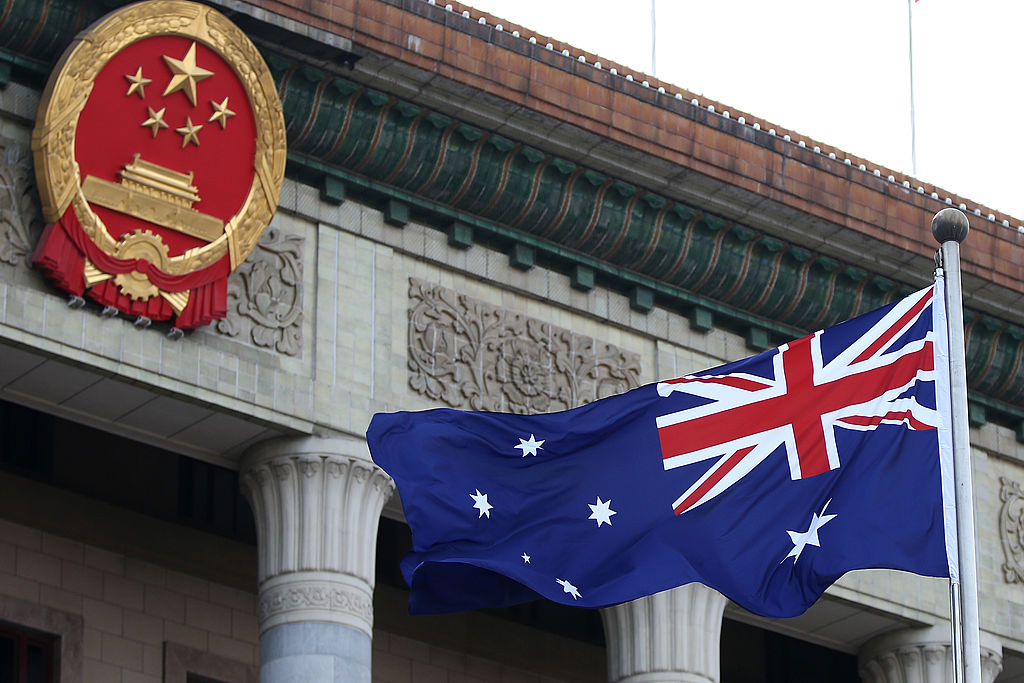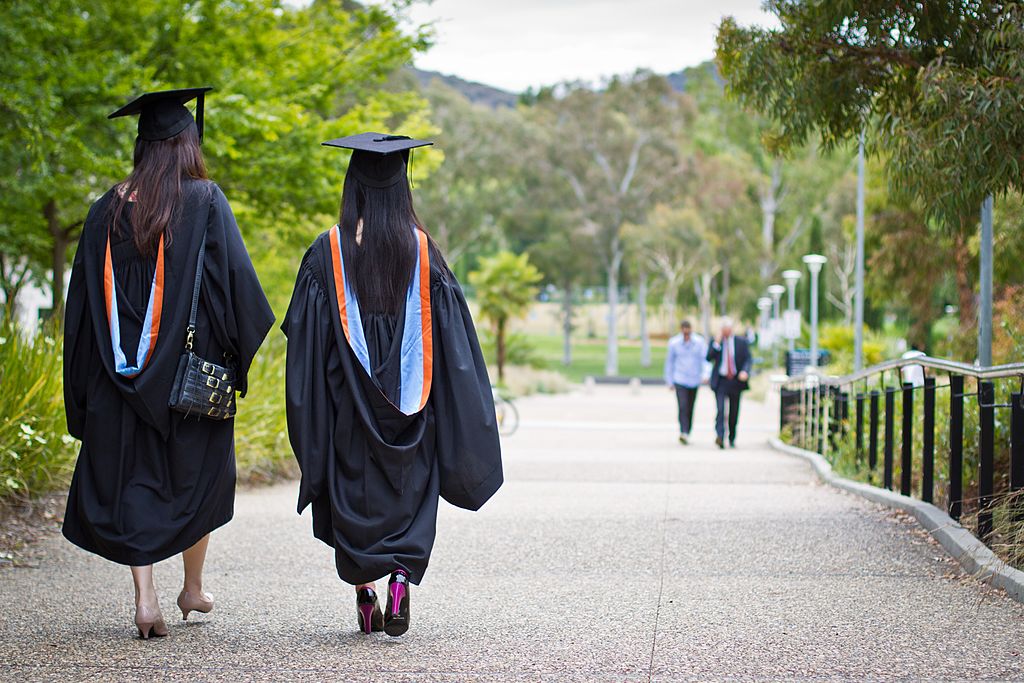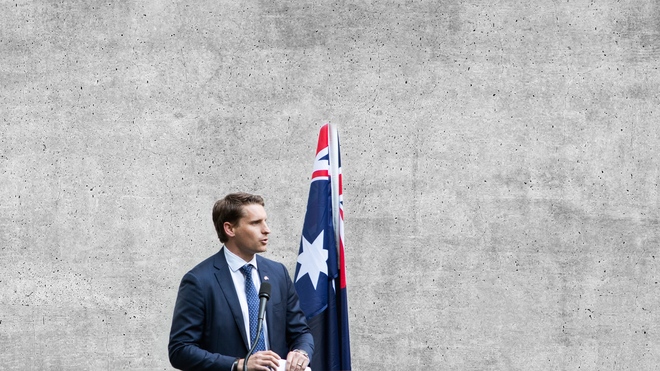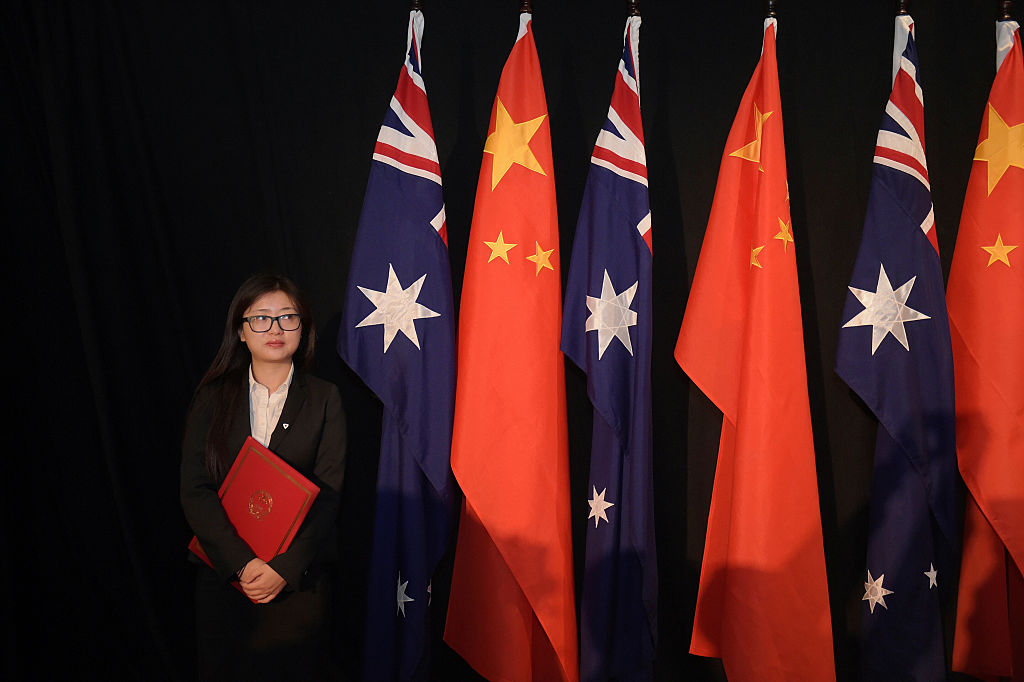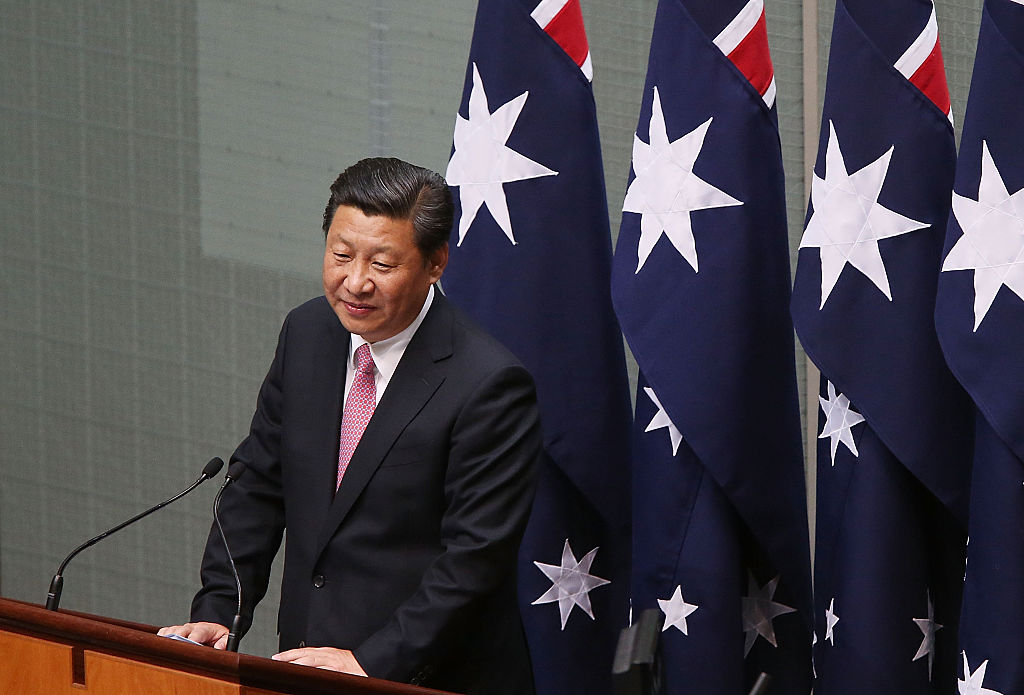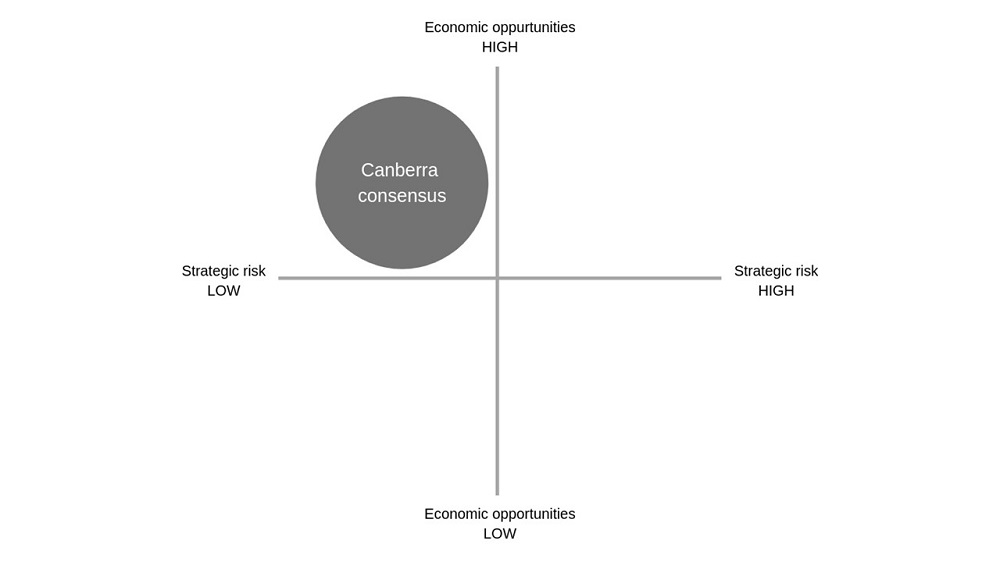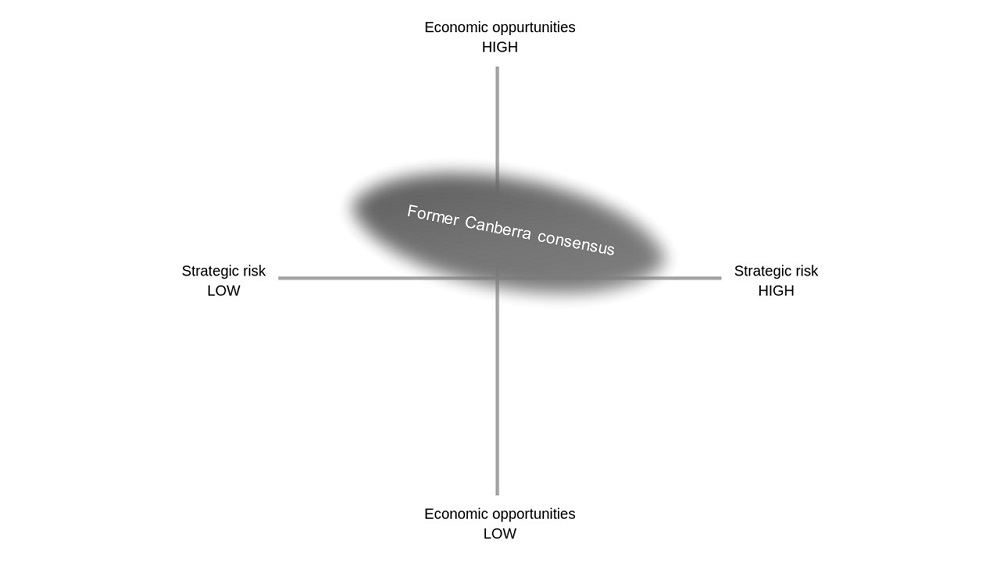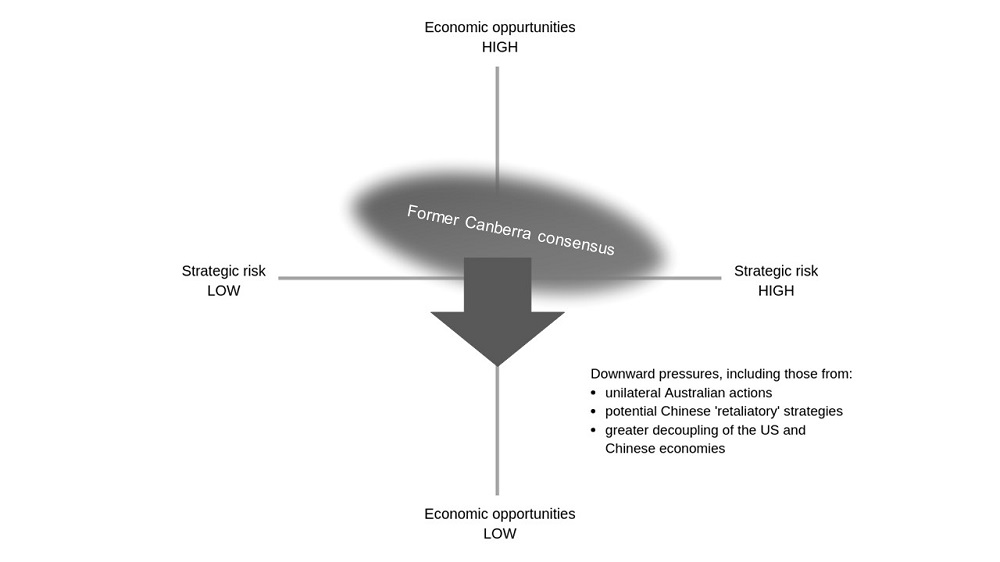ASPI suggests

The world
With Tech Geek taking a week off, this ‘Suggests’ includes more on the world.
The story of Wang Liqiang, who declared that he was a Chinese spy, broke this week with reporting in The Age and Sydney Morning Herald and an interview on 60 Minutes. China was quick to label him a fraudster and released footage of him allegedly confessing to his crimes. The Diplomat has more details. This episode of Chinese espionage in Australia could be the ‘greatest threat to Australian security’ since the Petrov Affair in the 1950s—though Tony Walker argues it shouldn’t be overhyped. Writing in The Strategist, Michael Shoebridge is fairly confident that Wang is who he says he is, and he also examines the alleged approach of Liberal Party member Nick Zhao by Chinese operatives who wanted to pay him to run for parliament. Michelle Grattan, meanwhile, has analysed ASIO director Mike Burgess’s statement on the matter and its implications in The Conversation, saying it lends credibility to Wang’s claims and obliges ASIO to inform the public of what emerges from the investigation.
Some spectacular interactive websites examining the activities of China’s rulers have been launched this week. ASPI’s China Defence Universities Tracker investigates the civil–military fusion of many Chinese organisations, what their research focuses on, and the risk of the findings of joint research projects with foreign entities ending up in the hands of the Chinese military. The Lowy Institute’s 2019 Global Diplomacy Index places China in pole position as the country with the most diplomatic posts across the world—including six in Australia. And back to ASPI, where the Mapping China’s Tech Giants site has just been updated to include projects by 23 Chinese companies in 96 countries utilising over 26,000 data points.
With each new climate change report comes alarming statistics about the future of our planet and its inhabitants. The UN Environment Programme’s Emissions gap report 2019 contains some of the scariest data yet. The world is on track to produce 56 gigatons of CO2-equivalent by 2030, double what would keep the increase in global temperatures to 1.5°C as outlined in the Paris agreement. See the UNEP interactive site for the quick facts and figures. Looking at Africa and Asia, Nature Climate Change has also released a report focusing on climate change and gender, noting ‘that environmental stress is a key depressor of women’s agency’. A link to the report, and its key findings, can be found in this ABC article. And if you aren’t worried enough, National Geographic has outlined nine ‘tipping points’ which are under threat, including ice sheets, coral reefs and forests, some of which are reaching a point of no return.
And while the media has been fixated on the demonstrations in Hong Kong, myriad protests have emerged across the globe, with many erupting into severe civil unrest.
In the Arab world, significant unrest continues in Algeria, Iran, Iraq, Lebanon and Sudan. Though Iran’s supreme leader, Ali Khamenei, recently dismissed these protests as being a consequence of an American ‘conspiracy’ owing to its ‘global arrogance’, commentators at DW and Time have suggested that a new Arab spring is taking shape. Academic Hamid Dabashi, using terms like ‘open-ended revolutions’ and ‘delayed defiance’, asserts that the 2011 Arab spring never really ended.
The worst civil violence in decades has similarly raged across South America and the Caribbean—in Bolivia, Chile, Colombia, Ecuador and Haiti. These protests have largely been sparked by grassroots movements condemning social inequality and the corrupt elite, and calling for comprehensive reform. But as Foreign Policy points out, the story is more complicated than that. Check out this article from Quartz, which illustrates the Chilean narrative of a nation plagued by extreme inequality veiled by its prosperous economic growth and rising per capita incomes.
In the Spanish region of Catalonia, more than half a million demonstrators have gathered in response to the jailing of Catalan separatist leaders. The South China Morning Post discusses the relevance of the protests in Barcelona and Hong Kong. As globalisation and interconnectivity increase rapidly, it seems such protests can have a powerful ‘contagion’ effect. BBC analysis suggests that there may be a common thread among these anti-establishment demonstrations across the globe as governments come under pressure to address corruption, income inequality and a lack of political freedom. See the ABC’s explainer of the causes and implications of the protests.
This week in history
On 28 November 1893, New Zealand held a general election in which, for the first time anywhere in the modern world, women voted. This was a major development in gender parity globally, but the fight continues. See The Atlantic for photos depicting the battle for women’s suffrage in the US.
Multimedia
Al Jazeera’s Counting the Cost has a short documentary on how mercenaries are changing the shape of war, circumventing international law and democratic accountability. [25:30]
Sometimes one has to stop and appreciate the beauty of the world around us. The Atlantic presents the winners of the 2019 Epson International Pano Awards with a collection of stunning images of the natural and man-made environments.
Podcasts
‘The spies who suck at spying’. The title of this week’s Russia, If You’re Listening podcast says it all as Matt Bevan explores espionage blunders that have had global consequences. [21:20]
Is international law positively or negatively impacting the stability of the Indo-Pacific? Chatham House investigates. [18:20]
This week in the National Security Podcast, Maldives Defence Minister Mariya Didi discusses the impacts of climate change on her country, and what’s driven the Maldives towards India and Sri Lanka as its prime security partners. [26:14]
Events
Canberra, 3 December, 9 am – 5 pm, ASPI: ‘Space policy masterclass’. Register here.
Melbourne, 4 December, 5.30–7.30 pm, Australian Institute of International Affairs: ‘The scope for greater Five Eyes cooperation in the Arctic and Antarctic’. Tickets here ($30).



